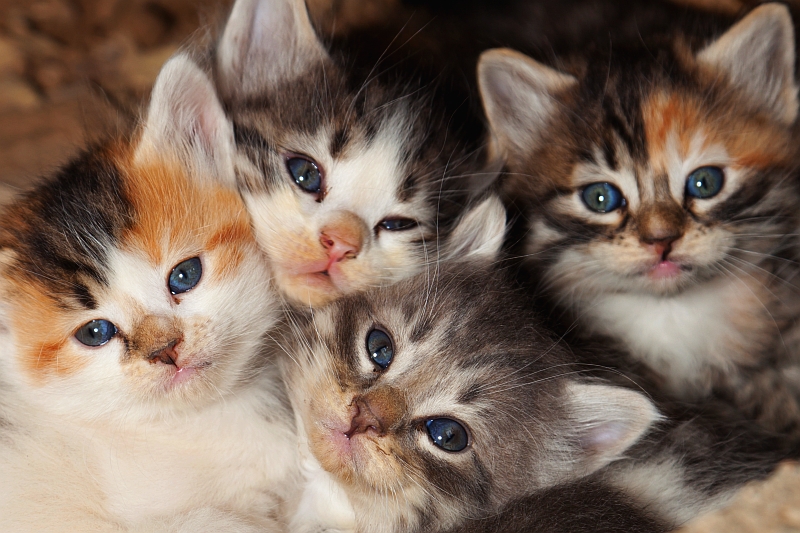Springtime is the season for baby animals, so it is not uncommon to happen upon little ducks in the park, or see signs saying “puppies for sale,” and on occasion finding a litter of abandoned kittens. This could be quite overwhelming at first, since most of us would not know what to do if we were to find kittens left in the wild to fend for themselves. Here are some tips about how to handle this situation in the safest way.
Observe the litter. Seeing helpless kittens inspires the care-giver instinct in most of us to go over to them right away and pick up the little felines. However, this is not a wise thing to do. First make absolutely sure that the kitties have indeed been abandoned, and not just hidden while the queen goes looking for food. If you can afford the time, stay a while nearby to see if the mother returns to her litter. How long should you wait? Usually cats will feed their young about every 4 hours, so if you can manage to hang out at the park, or keep an eye on the dumpster that long, it will assure you of whether or not they have truly been left alone.
If you don’t have that kind of time, try setting a “cat trap” that will indicate if the mother has returned. For example, one approach is to lay some newspaper around the kittens (if they are very young and are not likely to explore for themselves) and splash some food coloring mixed with water on the outside of the paper. That way if the mother returns to her kittens, she will walk through on the makeshift dye, onto the paper, which you can then check the next day to determine whether or not the feline has abandoned them, if there are adult cat tracks or not. If longer than 8-12 hours has gone by without any indication of visitation, assume that the kittens are alone and in desperate need of care.
Note: if the mother does return, and the cats are evidently strays/ferals, notify the nearest shelter about the location of the brood. That way in due course these cats can be captured and spayed or neutered to ensure that this kind of reproduction doesn’t recur.
Taking the cats in. If abandonment is certain, you can take the cats home to care for their immediate needs while long-term solutions are being sought. Using a clean box or crate, lift, usher or coax the kittens into the box for safe transportation. Once they are home, you can bathe the kittens with warm water and gentle pet wash made specifically for young cats. (Alternatively, wipe their fur down with disinfectant pet-safe wipes for a quicker clean up.) You can also bottle-feed the cats with formula designed for small animals.
Note: Never feed a cold kitten. Make sure they are warm, wrapped in a towel is needs be, so that their bodies will be able to consume the liquid without digestive disruption. Make sure you review our tips on how to bottle-feed pets before you attempt this at home.
Arranging for long-term care. Once the kittens have been washed, fed and are resting in a warm place together, you can focus on the next steps. Get in touch with your local pet shelters and see if there is any space for these animals to be cared for. You may be asked to describe the kittens, measure their sizes so that the shelter worker will be able to roughly guess how old the kittens are. Some homes will not take in pets if they are too young, which may require you to take responsibility for their care. If this kind of supervision and feeding schedule is too much for you, reach out to friends to see if anyone else might be able to help. Fortunately, if you have to provide foster-care for the kittens in your home, it will only last a few weeks, since many shelters will take in kitties over 8 weeks old.
Preparing them for the future. Call your veterinarian to inquire whether or not the cats should have any supplements, or additional care in these early weeks. If there is any sneezing or coughing that you notice it would be best to call a professional for advice on how to keep the kittens well. In addition to their physical health, emotional and mental health is important for developing animals. The more you are able to hold the kittens, play with them and pet them from a young age, the more socialized they will become. This will increase their chances of being easily domesticated if they were feral. They will be better candidates for adoption if prospective pet-buyers see how well-adjusted these fur-babies are, once they are settled in the adoption center or pet shelter.

